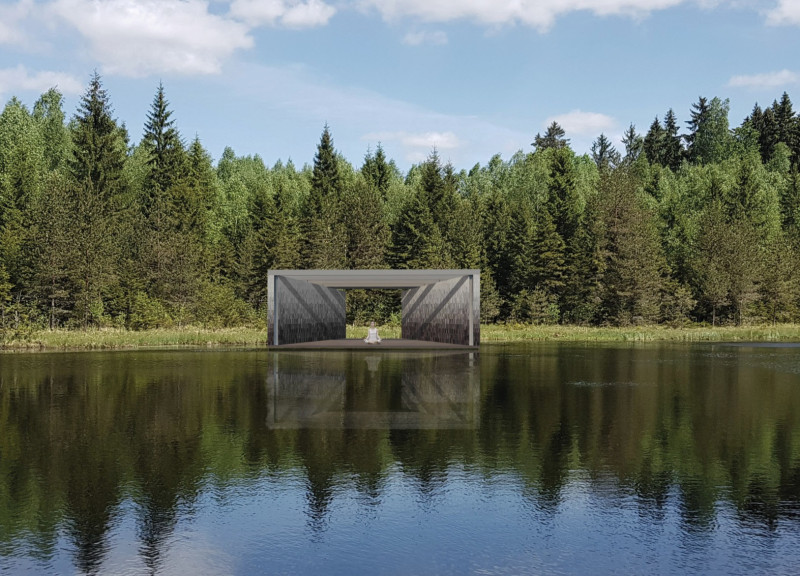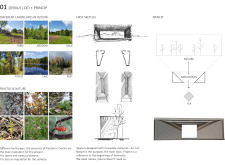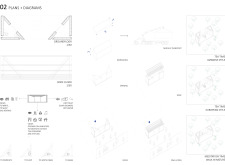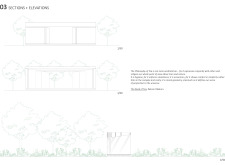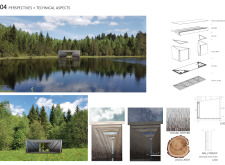5 key facts about this project
Unique Concept Integration
The project utilizes the principle of "Genius Loci," emphasizing a deep connection to the spirit of the place. This approach informs the architectural design, resulting in a structure that reflects the characteristics of the landscape. Integral to this concept is the exploration of fractals in nature, which are evident in the spatial arrangements and overall form of the building. These organic patterns promote a sense of continuity with the environment and enhance the aesthetic experience within the space.
The design incorporates moveable elements made from lightweight materials such as polycarbonate and local larch wood, enabling a dynamic relationship with changing light conditions. The flexibility of these elements facilitates diverse uses of the interior, from communal gatherings to solitary reflection. Spaces for European and Japanese tea ceremonies are thoughtfully designed, catering to various cultural practices and encouraging social interaction while allowing for moments of solitude.
Functional and Technical Details
The architectural plans demonstrate careful consideration of both function and sustainability. The structure is organized into clearly defined zones that foster specific activities, including meditation, writing, and socialization. Diagrams and architectural sections reveal the thoughtful distribution of space, ensuring that each area serves its intended purpose effectively.
Natural light is a key element in the design, with extensive use of glass enabling unobstructed views of the landscape. This transparency not only enhances visual connection with the environment but also contributes to the overall ambiance within the building. The choice of materials such as concrete, metal fasteners, and glass reflects a commitment to durability and maintenance, projecting an image of permanence and stability in the architectural context.
The combination of local materials and contemporary design techniques ensures that the project remains sustainable and relevant to its surroundings. This attention to ecological context and user experience demonstrates a forward-thinking approach in contemporary architecture.
For those interested in nuanced architectural ideas and specifics, exploring the architectural plans, sections, and overall designs of this project will yield deeper insights into its unique characteristics and functionalities. Engaging with the details of this architectural endeavor will provide a comprehensive understanding of how design can effectively respond to the natural environment while fulfilling a variety of user needs.


